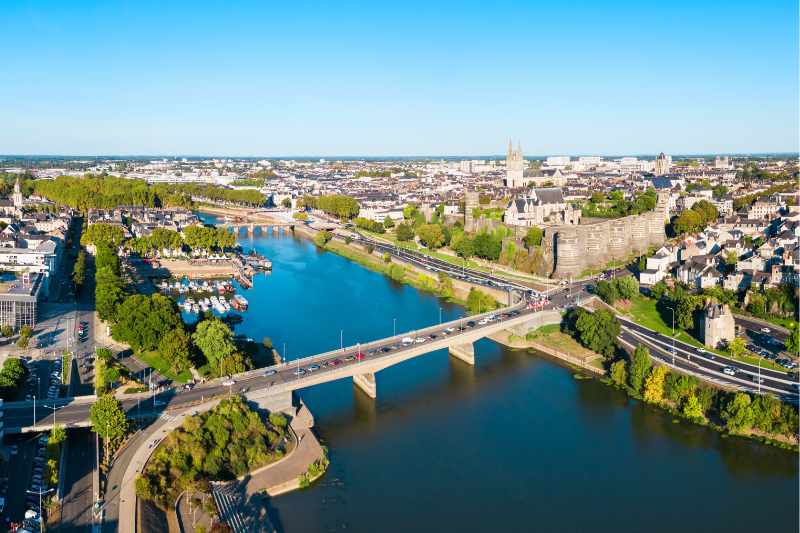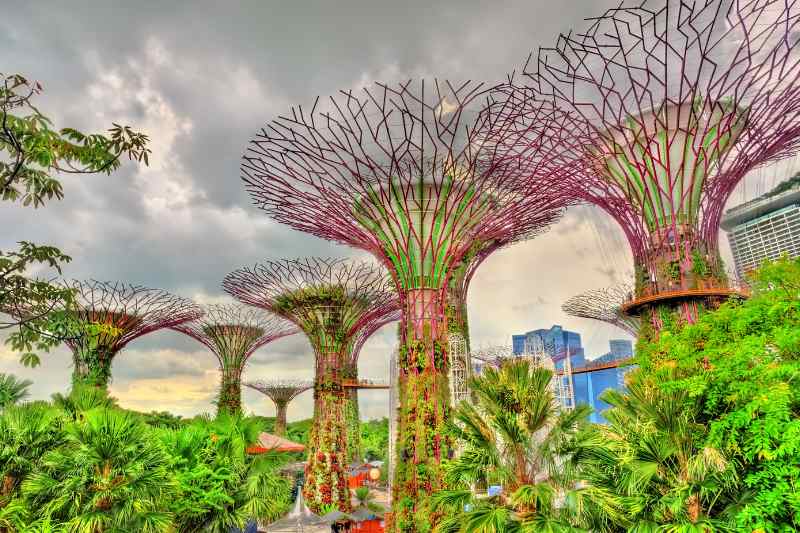Green cities, also known as sustainable cities, represent an urban concept that widely integrates sustainability into its various aspects — ecological, economic, and social. Their main objective is to minimise environmental impact while improving the quality of life for their residents. Currently, rapid urbanisation raises critical challenges, including resource management, pollution reduction, and enhancing urban biodiversity. Green cities address these challenges through innovative solutions and sustainable development practices.

A green city... truly green
The definition of what constitutes a green city varies, but at the heart of the concept are the integration of vegetation into the urban landscape, efficient resource use, and planning that promotes sustainable lifestyles. Vegetation plays a crucial role not only in beautifying the city but also in combating pollution and creating habitats for urban wildlife. It contributes to thermal regulation, thereby reducing urban heat islands and improving residents' comfort.
In Singapore, the "Gardens by the Bay" project is an emblematic example of integrating vegetation into urban environments. This futuristic park, comprising vast greenhouses and themed gardens, features structures like the Supertrees, vertical structures that function as ecological trees. These Supertrees collect rainwater, produce solar energy, and serve as air conduits for the greenhouses, while also housing a diversity of floral and faunal species.
However, Antwerp has also implemented the "Green Singel" project, which aims to transform an old highway into a linear park encircling the city. The competition is fierce, but Angers remains at the forefront as the greenest city in France with no less than 102 m² of green space per inhabitant.

Energy: a crucial issue
Energy efficiency is another central pillar of green cities. This involves the use of advanced technologies to reduce energy consumption in buildings, street lighting, and transport networks. Eco-friendly buildings, for example, are designed to maximise natural light and insulation, thereby decreasing reliance on energy-intensive heating and cooling systems. Street lighting can be optimised with LEDs and smart systems that adjust light intensity according to actual needs.
The Council Building for Sustainable Construction in Washington, D.C., is a model of energy performance. It uses photovoltaic windows and an automated energy management system that adjusts lighting and temperature based on occupancy. This building is one of the first to achieve LEED Platinum status, demonstrating the highest standards in energy efficiency. In France, the Elithis Tower in Dijon is considered the world's first positive energy tower. It produces more energy than it consumes thanks to innovative architectural design and the use of solar technologies. In Brussels, the "Greenbizz" building offers spaces for eco-innovative businesses and is an example of sustainable construction, using eco-friendly materials and solar panels.
The transport issue
Sustainable transport is also essential for reducing greenhouse gas emissions. Green cities encourage the use of public transport, cycling, and walking as alternatives to personal vehicles. Creating efficient public transport networks and establishing secure cycling paths are key strategies to achieve this. Additionally, some cities invest in electric vehicle technology (although the "green" aspect of such vehicles can still be debated), including the installation of charging stations and integrating these vehicles into public transport fleets.
Copenhagen, Denmark, is renowned for its cycling culture. The city boasts over 390 kilometres of cycling paths, and more than 36% of the population uses bicycles to commute to work or school. Copenhagen aims to become the world's first carbon-neutral capital by 2025, partly due to its strong promotion of cycling transport. However, there's no need to look far to see great initiatives; the city of Strasbourg has also been prioritising cycling infrastructure for 40 years. Ghent, Belgium, is another example of a city that has focused on sustainable transport, particularly with its traffic plan that prioritises pedestrians, cyclists, and public transport in the city centre, limiting car access and thus reducing emissions.
More efficient waste management
Waste management is also a crucial aspect of green cities. Recycling and reuse are encouraged to reduce the amount of waste sent to landfills. Some cities implement innovative organic waste management programmes, such as community composting, which transforms kitchen and garden waste into valuable amendments for urban soils.
In San Francisco, the municipality has implemented a composting programme that has become a model for cities worldwide. The city diverts about 80% of its waste from landfills through a mandatory recycling and composting programme, aiming for zero waste by 2030. However, the city of Paris has also launched urban composting programmes where residents can drop off their organic waste. These collection points are spread throughout the city to encourage recycling and waste reduction.
Water is life!
Water, a vital resource, is managed sustainably in green cities. Collecting and using rainwater, treating and reusing wastewater for irrigation and urban green spaces are common practices. These actions contribute not only to water conservation but also to flood prevention in densely populated urban areas.
The city of Melbourne in Australia has developed a network of green roofs and rain gardens that contribute to sustainable water management. These installations help reduce rainwater runoff and lessen the burden on urban drainage systems while providing attractive green spaces for city dwellers.
A green city is ultimately the sum of its citizens
Beyond these technical elements, green cities also aim to create an environment in which the community is engaged and informed about sustainable practices. Schools and local organisations play an active role in environmental education, teaching younger generations the importance of sustainability. Community events such as eco-fairs, sustainability workshops, and tree planting programmes strengthen the bond between citizens and their environment.
In Toronto, Canada, the "Greenest City" project encourages residents to participate in urban sustainability through workshops and community initiatives. This project includes community gardens, tree planting programmes, and educational workshops on environmental sustainability, thereby reinforcing local communities' commitment to eco-friendly practices. The city of Grenoble has implemented "Agenda 21", an action plan for sustainable development that invites citizens to actively participate in ecological initiatives throughout the city, further strengthening local community engagement.
It sounds great, but... is it really feasible?
The concept of a green city is not only feasible but is also being implemented in many cities around the world. However, the transition to fully green cities comes with several challenges that can hinder or slow down this process. Here are some of the main obstacles:
High cost
Transforming an existing city into a green city requires substantial initial investments. Sustainable infrastructures, such as eco-friendly buildings, improved public transport systems, and technologies for water and waste management, are often costly to implement. Municipal budgets may be limited, and without financial support from the state or private investors, projects may stagnate.
Resistance to change
Cultural and behavioural change is essential for the success of green cities. However, gaining public buy-in and changing lifestyles can prove challenging. Residents may resist using public transport, sorting waste, or adopting other sustainable practices if they are not perceived as practical or beneficial in the short term. That's just human nature...
Governance and coordination
Effectively implementing ecological policies and programmes requires coordination between various levels of government and different sectors. A lack of collaboration or shared vision among government agencies, businesses, and citizens can hinder green city initiatives. Getting everyone on the same page has never been easy.
Existing infrastructures
In older cities, existing infrastructures may not be suited to new eco-friendly technologies. For example, integrating modern water management systems or retrofitting buildings for energy efficiency can be complex and costly in already densely built urban contexts.
Social inequalities
Green city initiatives must also take into account social and economic inequalities. There is a risk that the benefits of ecological projects primarily benefit wealthier residents, while less advantaged communities may be overlooked or face negative consequences, such as rent increases due to neighbourhood beautification.
Environmental impact of construction
Although the goal is to reduce environmental impact, the construction processes necessary to develop green infrastructures can themselves have significant negative impacts on the environment, particularly in terms of carbon emissions and natural resource consumption. It's paradoxical, but it's a fact that shouldn't be taken lightly.
Despite these challenges, the concept of a green city remains a viable and essential strategy for promoting a sustainable future. Many cities continue to overcome these obstacles through innovation, policy, education, and community participation, thus laying the groundwork for more sustainable and pleasant urban environments.































Comments